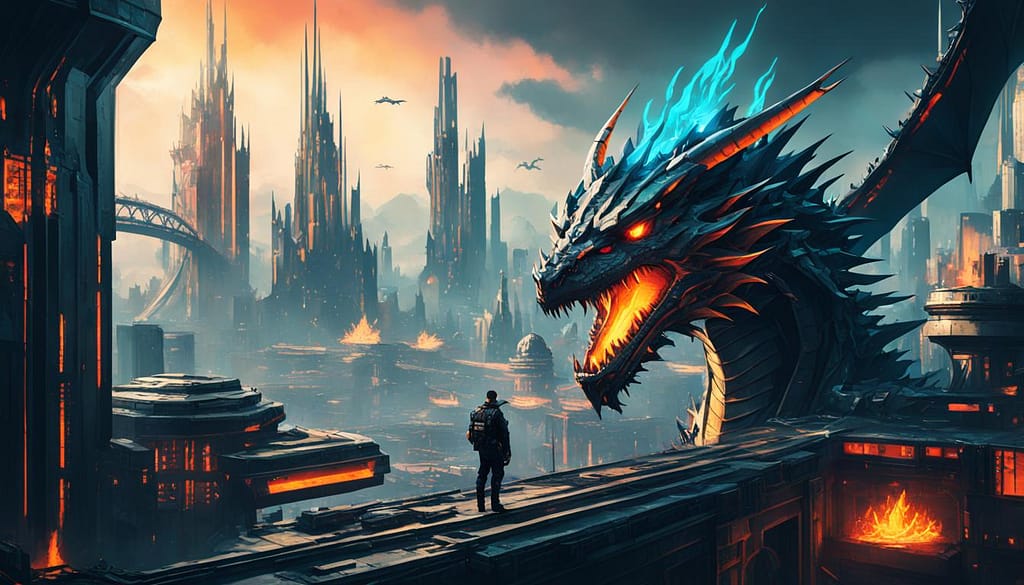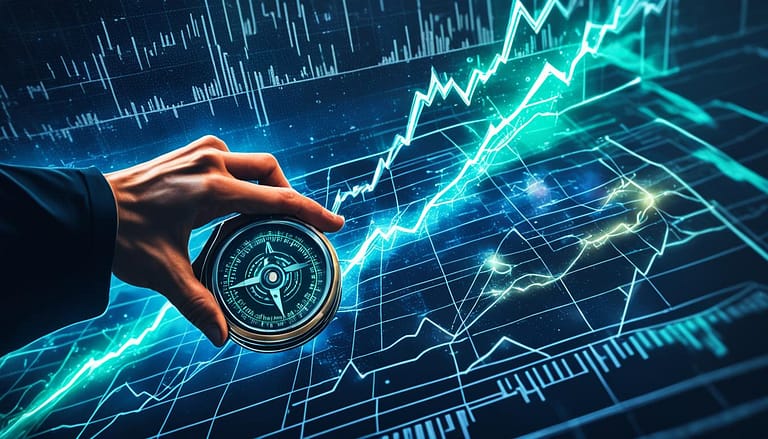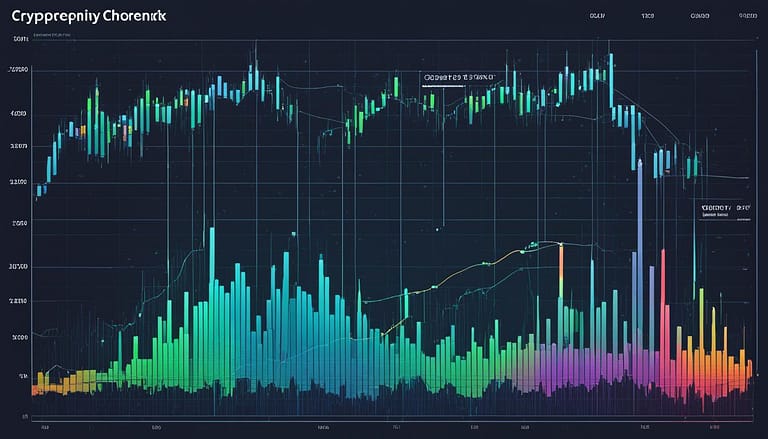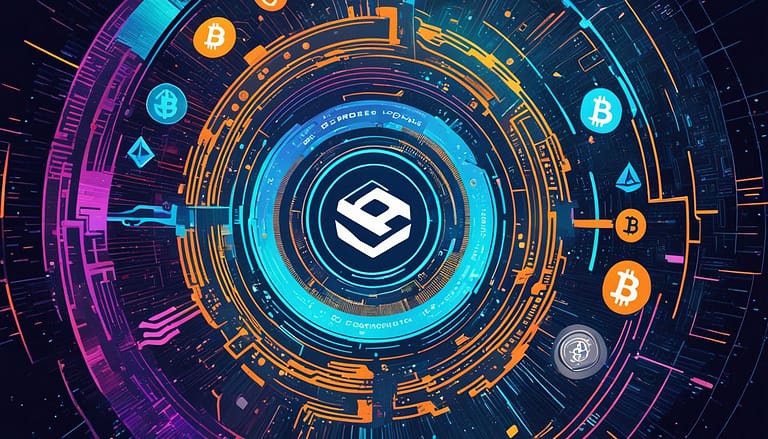The Investor’s Guide to Non-Fungible Tokens (NFTs)
In the burgeoning realm of digital assets, the clamour of the NFT market is impossible to ignore. These unique cryptographic assets, fueled by blockchain technology, offer an unprecedented opportunity for investors to diversify their portfolios into the digital art and collectibles spaces. Unlike regular currencies, Non-Fungible Tokens (NFTs) are not interchangeable, granting them an exclusive status within the digital economy. Each NFT carries an irrefutable digital signature, allowing for verifiable ownership, which is why NFT investment strategies are becoming increasingly sophisticated as the market rapidly expands.
As we explore the nuances of the NFT zeitgeist, it’s essential to note that these digital tokens represent much more than just a trendy investment fad. They are the cornerstone of a digital legacy, representing everything from online art to virtual real estate. Renowned figures such as Mark Cuban have recognized the transformative potential that NFTs hold, not just in creating digital scarcity but also in offering new vistas for anyone willing to delve into the cryptocurrency dynamics. The robust, decentralized nature of blockchain ensures that each NFT is unique, tamper-proof, and securely transferrable, making them a viable asset in an era characterized by digital innovation.
As a Canadian investor, grasping the essence of this new-age asset class can set you apart in the dynamic cryptocurrency market. This guide aims to provide insight into the complexities and potential of investing in NFTs, preparing you to make informed decisions as the digital asset landscape unfolds.
Key Takeaways
- Dive into the world of unique and secure investment opportunities with NFTs.
- Understand NFTs’ role in establishing digital scarcity and ownership.
- Explore the benefits blockchain technology brings to digital assets.
- Recognize the growing influence of NFTs on the global investment stage.
- Prepare for the future by considering NFTs in your digital investment strategies.
- Learn how leading figures are endorsing and shaping the NFT market.
Understanding Non-Fungible Tokens (NFTs)
Exploring the realm of Non-Fungible Tokens (NFTs) unveils a fascinating world where art, technology, and commerce converge. Stepping into this domain requires a grasp of what sets NFTs apart in the digital landscape. By delving into the specific characteristics that define the NFT market, enthusiasts and investors alike gain a deeper appreciation for the value proposition these cryptoassets offer.
Definition and Origin of NFTs
At their core, NFTs are best understood as a unique class of digital assets, distinguishable and exchangeable on platforms supported by the Ethereum blockchain. Broad in scope, NFTs can encapsulate a myriad of items, ranging from artwork to interactive video game elements, to web domains and beyond. The terminologies, ‘non-fungible’ and ‘token’, join to represent something entirely singular: an asset that is not directly replaceable by another, heralding an era of digital scarcity within the burgeoning digital economy.
How NFTs Differ from Traditional Digital Assets
NFTs differ significantly from traditional digital assets. Where once the digital world was a playground of infinite replication and distribution, NFTs introduce the paradoxical concept of scarcity in a realm of abundance. Their uniqueness comes from their non-interchangeability, setting them apart from fungible counterparts like Bitcoin. Each ERC721 token signifies an asset with its distinct narrative, importance, and cryptoasset ownership – elements absent in traditional digital assets.
The Technical Anatomy of an NFT
The backbone of every NFT lies within its technical framework, primarily powered by the ERC721 standard. This technical specification provides the infrastructure needed to record and verify NFT ownership, ensuring that the underlying asset, whether digital art or another form of creative work, is inextricably linked to its owner. The resilience of this infrastructure bolsters confidence amongst investors and creators, as it guarantees that the asset’s uniqueness can’t be compromised or cloned.
The convergence of these elements—digital scarcity, secure ownership, and the Ethereum blockchain—signals a revolution in how we perceive value and ownership in the digital age. In turn, this opens doorways to new possibilities for creators, consumers, and investors within the landscape of digital assets.
Navigating the NFT Market Landscape
The NFT trading sphere is rapidly evolving, encompassing a diverse range of digital collectibles that are shaking up traditional investment avenues. Art NFTs, in particular, have soared in valuation, with notable sales like Beeple’s multimillion-dollar artwork underscoring the potential for substantial financial returns. Investors venturing into this market can expect to engage with a revolutionary system powered by blockchain technology, ensuring the veracity and security of each unique asset.
With every digital collectible being one-of-a-kind, the excitement around NFTs is palpable. Collectors and investors alike are drawn to the undeniable authenticity that blockchain technology affords each NFT, positioning these assets as more than mere collectors’ items, but as pivotal pieces within an emergent digital economy. The market for art NFTs is particularly vibrant, offering thrilling new ways for artists to monetize their creativity and for art lovers to support and invest in their work.
Transactions in the NFT marketplace do more than just transfer ownership; they preserve the unique identity and provenance of digital assets, ensuring that each NFT holds its distinct place in the digital expanse.
- Expansion of art NFTs beyond traditional artworks to include virtual reality pieces and designer digital collectibles
- Significant potential for NFT trading as a new asset class in diverse portfolios
- Blockchain technology serving as a foolproof ledger, reducing the risk of forgery and fraud in the NFT marketplace
As the domain of NFT trading continues to widen its horizons, it’s crucial for potential investors to undertake a well-informed, strategic approach to navigate the nuanced complexities of this burgeoning market.
| Attribute | Importance in NFT Trading |
|---|---|
| Rarity | Dictates the value based on scarcity and exclusivity |
| Authenticity | Guaranteed by blockchain, ensures the NFT is legitimate |
| Utility | Encompasses potential use-cases aside from collectibility |
| Liquidity | Reflects ease of converting NFTs to cash or other assets |
| Provenance | Chronicled history of ownership adds to an NFT’s narrative and value |
Exploring Use Cases for Non-Fungible Tokens
Non-Fungible Tokens (NFTs) have surged in popularity, offering a transformative approach to notions of NFT utility, digital art, proof-of-ownership, and blockchain. These digital assets are much more than just collectibles; they provide innovative solutions to real-world problems related to intellectual property rights and asset verification, disrupting the traditional methods of ownership verification.
The practical applications of NFTs are vast and varied, encompassing sectors ranging from the arts to event management. Let’s delve into a few use cases that illustrate the potential impact and utility of NFTs:
- Art and Collectibles: Artists are utilizing NFTs to materially benefit from the sale of their works, enabling them to retain a percentage of sales through smart contracts if their works are resold in the secondary market.
- Real Estate: Tokenizing property allows for fractional ownership, making it possible for a wider audience to invest in real estate by purchasing a percentage of a property as an NFT.
- Entertainment: The entertainment industry is exploring NFTs as a means to sell exclusive content, from unique album releases to special edition films.
| Sector | Utility of NFTs | Example |
|---|---|---|
| Art | Certification of authenticity and origin | Digital artist releases limited edition artwork as NFTs |
| Sports | Trading of collectible items and fan experiences | Sports franchise offers virtual meet-and-greet sessions as NFTs |
| Fashion | Verification of limited edition goods | Luxury brand creates a digital sneaker collection tokenized as NFTs |
| Event Ticketing | Fight against counterfeit tickets | Music festival issues tickets as NFTs to ensure authenticity |
| Gaming | Ownership of in-game assets | Gamers collect and trade in-game items as NFTs |
In each case, NFTs act as a linchpin, reinforcing the security and verifiability provided by the blockchain. Consequently, they address challenges like duplication, fraud, and ownership ambiguity that have long-plagued various industries. As we continue to explore and realize the full range of NFT utility, it is clear that these tokens are more than just a fad; they are the harbingers of a digital revolution with the blockchain as its backbone, reshaping our understanding of value, ownership, and exchange in the digital world.
The Art Revolution: NFTs Shaking Up the Creative World
The emergence of NFTs is rippling through the art community, heralding a paradigm shift in the ways that art is valued and traded. Central to this transformation is the digital art revolution, where Ethereum and NFT marketplaces have become the canvas and galleries for contemporary digital creators. This technological breakthrough has democratised the traditional art world, ushering in an expansive era for artists and collectors alike.
Beeple’s Impact: NFTs in the High-End Art Scene
When Beeple’s digital piece was auctioned for a monumental sum, it sent shockwaves through the traditional corridors of the art world and signalled the entry of digital art into the prestigious high-end market. This single event has not only elevated Beeple’s status but also spotlighted Ethereum’s blockchain as a driving force behind the sale and authenticity of digital artworks.
From Art Basel Banana to Digital Art
The narrative of art’s intrinsic value has evolved from the physical to the digital, as seen with the famed Art Basel banana, where the conversation pivoted from the object itself to the concept and authentication behind it. The NFT sector has captured this shift perfectly, offering immutable proof of ownership and authenticity, similar to the sought-after certificates of high-art establishments.
New Platforms for Digital Artists and Investors
As NFT marketplaces bloom, they function as both exhibition spaces and auction houses for digital art, breaking down barriers and geographic limitations. These platforms provide digital creators with unprecedented access to a global audience of art enthusiasts and investors, carving out a new digital economy for those willing to navigate its potential.
“NFTs have unlocked a new model of ownership and value in the art world, reshaping the landscape for artists, collectors, and investors.”
With the adoption of NFTs, we are bearing witness to a pivotal moment in art history. The blockchain is not just a technology but a new medium for artists, a gallery without walls for collectors, and a revolutionary marketplace for investors eager to support the burgeoning world of digital creation.
Strategies for NFT Investment
Investing in NFT assets requires an understanding of the unique market dynamics propelled by digital scarcity and the innovative application of blockchain investment. To navigate this terrain, investors must adopt robust investment strategies that take into account the distinctive quality and desirability which underpin the value of NFTs.
Thorough research to discern which NFTs have the potential to appreciate in value is crucial. Just as with traditional investments, the reputation of the creator, the uniqueness of the piece, and existing market demand are significant factors influencing an NFT’s future worth.
“The allure of NFTs rests in their encoded rarity and unmistakable ownership, providing opportunities in the blockchain landscape that didn’t exist a few years ago,” notes a seasoned analyst of digital markets.
Diligence in assessment and continuous market surveillance are indispensable elements for success in NFT investing. It’s not enough to rely on surface-level charm; an in-depth review of transaction history and creator credibility is advised. The table below presents a strategic comparison between key considerations for potential NFT investors:
| Investment Strategy | Desired Outcomes | Risks and Considerations |
|---|---|---|
| Quality Evaluation | Acquiring high-value, reputable NFTs with growth potential | Potential overvaluation based on hype rather than inherent value |
| Market Trends Analysis | Staying ahead with early investments in rising NFT trends | Volatility and rapid shifts in consumer interest |
| Strategic Diversification | Reducing risk through a varied NFT portfolio | Difficulties in managing and tracking multiple investments |
| Community Engagement | Gaining insights and networking within the NFT community | Time investment required to foster meaningful connections |
Additionally, ensuring that digital wallets and storage solutions are secure and reliable is fundamental for preserving the integrity of an NFT investment.
- Choose compatible wallets that support the blockchain where the NFT exists.
- Engage actively in NFT forums and discussions to stay informed.
- Be prepared to adapt to new developments in blockchain technology.
Ultimately, the path to successful investment in NFTs is marked by a blend of attentiveness to market signals, technological savvy, and prudent decision-making. With digital scarcity at its core, this new asset class has the potential to yield substantial rewards for those who approach it with clarity and precision.
Investing in Digital Collectibles: More Than Just Art
The realm of NFT investments extends far beyond the galleries of digital art, breaching sectors that directly interact with today’s tech-savvy consumers. In gaming and music, NFTs are revolutionizing how we perceive ownership and value in digital worlds. Not only have these tokens created ripple effects in digital spaces, but they are also pioneering the movement of real-world tokenization, a concept unifying the tangible and intangible into the blockchain.
Beyond the Canvas: NFTs in Gaming, Music, and More
Gaming NFTs have swiftly become a pillar in the intersection of entertainment and blockchain technology. With assets such as exclusive in-game skins and unique character abilities represented as NFTs, players now have verifiable ownership of their digital collections. Similarly, music tokens are offering artists a fresh avenue to monetize their work, with tokens representing digital tracks or entire albums providing fans with a new form of collectible memorabilia.
Real-World Assets Tokenized as NFTs
As the digital and physical worlds converge, real-world assets are being tokenized on the blockchain, providing investors with solid, tangible investments. From real estate to fine wine, the tokenization process imbues these assets with the advantages of NFTs—traceability, security, and ease of transfer—while maintaining their inherent value.
Unique Investments: What Makes NFTs Stand Out
The allure of NFT investments lies in the unmistakable uniqueness of each token. The indivisibility and non-fungibility of these assets make them stand out from traditional investments. What’s more, the underlying blockchain technology adds a layer of security and authenticity that is hard to replicate in conventional markets. NFTs are not just redefining the landscape of investments but are also shaping the future of how we engage with various forms of media and real-world assets.
Risks and Considerations for NFT Investors
Navigating the world of Non-Fungible Tokens (NFTs) can be as exciting as it is unsettling. Strategic investors weigh the NFT risks and incorporate thorough investment considerations before committing funds. A significant aspect of NFT trading is understanding and coping with market volatility—an element that can rapidly inflate or diminish the value of digital assets without forewarning.
Acknowledging the potential challenges involved in securing such assets, attention to blockchain security measures is essential. The complex landscape of NFT investments not only commands due diligence but also a calculated approach towards risk management, aiming to protect and potentially grow one’s investment portfolio.
| Risk Factor | Impact on Investment | Strategic Considerations |
|---|---|---|
| Market Volatility | Fluctuation in NFT prices, potentially resulting in financial loss. | Diversify across various assets to mitigate potential losses. |
| Blockchain Security | Risk of theft or fraud due to weak security protocols. | Employ strong encryption and multi-factor authentication for accounts. |
| Regulatory Uncertainty | Potential for changes in laws affecting NFT ownership rights. | Stay up-to-date with legal developments within the NFT space. |
| Authenticity of NFTs | Influx of counterfeit NFTs posing as genuine digital assets. | Verify provenance and transaction history of the NFTs before purchase. |
Not only is diversification a prudent tactic, but setting a ceiling on exposure to any individual NFT is also a sensible part of any sound investment strategy. The paradox of NFTs lies in their being uncorrelated assets yet susceptible to whimsical market sentiment; investors are encouraged to foster a balanced perspective on the investment considerations specific to the NFT sector.
To fortify against the unpredictable tides of the NFT marketplace, it’s imperative for investors to keep abreast of market trends, technological enhancements, and security developments. Experienced investors often plan ahead for the potentiality of short-term downturns while considering the long-term potential of their NFT portfolio.
In conclusion, the allure of NFTs is undeniable, but with intriguing opportunities come significant responsibilities. Whether you are new to the world of digital assets, or you have been trading on the blockchain for a while, continual education and vigilance are the cornerstones of navigating the NFT investment landscape successfully.
Securing Your NFT Investments: Storage and Safety
Ensuring the safety of your non-fungible tokens (NFTs) means understanding and using the right tools and practices. With the proliferation of NFT wallets, and increased activity on cryptocurrency exchanges, securing digital assets has become more imperative than ever. This section will guide you through choosing the most suitable wallet for your NFTs, implementing robust security measures to guard against theft, and strategies to verify the authenticity of your digital investments.
Choosing the Right Wallet for NFTs
Selecting an NFT wallet that supports the blockchain where your NFTs reside is the first step in securing your digital collectibles. Compatibility is key, as are the security features offered by the wallet provider. Whether it’s a hardware wallet that stores private keys offline or a software wallet that offers convenience and ease of access, the choice depends on the level of security you require and the frequency of your transactions.
Security Measures to Prevent NFT Theft
Prioritizing digital asset security necessitates a multifaceted approach. It involves more than merely keeping your wallet’s password safe; it’s about understanding the smart contracts that govern your NFTs. Caution is especially warranted with the decentralized nature of cryptocurrency exchanges, as the complexity here may hinder asset recovery. Incorporate measures such as two-factor authentication and keep abreast with the latest security protocols to enhance your defenses against potential threats.
Tackling the Risk of Counterfeit NFTs
To address the risk of counterfeit NFTs, it is crucial to scrutinize the provenance and transaction history of an NFT before purchase. Authenticity checks should be integral to your investment strategy to ensure you’re acquiring legitimate digital assets. Develop a keen eye for differences between original and counterfeit tokens and be wary of offers that seem too good to be true.
Understanding the landscape of NFTs, from wallets to smart contracts, is paramount in both safeguarding your assets and making informed investments in this exciting space.
| Wallet Type | Security Level | Accessibility | Compatibility |
|---|---|---|---|
| Hardware Wallet | High | Lower | Select Blockchains |
| Software Wallet | Medium | High | Multiple Blockchains |
| Mobile Wallet | Medium | High | Specific Blockchains |
| Paper Wallet | High | Low | Select Blockchains |
Strategic and thoughtful consideration of wallet choice and security is not just advisable but essential for anyone looking to secure their NFT investments in today’s digital age.
Environmental Impact and Ethical Concerns of NFTs
The recent surge in popularity of Non-Fungible Tokens (NFTs) presents an intriguing dilemma for those sensitive to environmental ethics and the advocates of NFT sustainability. Questions regarding the blockchain energy consumption, especially by networks that rely on the Proof of Work (PoW) system, have sparked a significant conversation among stakeholders. The heightened energy demand for maintaining the blockchain and processing NFT transactions contributes to an increasing carbon footprint associated with this burgeoning digital asset market.
As the world grapples with these concerns, there’s a collective movement towards more energy-efficient technologies, such as the Proof of Stake (PoS) protocol. This transition stands as a testament to the innovative solutions within the blockchain community to reconcile technological advancement with environmental responsibility.
| Protocol | Energy Consumption | Carbon Footprint | Sustainability Rating |
|---|---|---|---|
| Proof of Work | High | Significant | Low |
| Proof of Stake | Reduced | Lower | Higher |
Moreover, the ongoing development in layer-two solutions and the emergence of eco-friendly NFT platforms illustrate the industry’s dedication to minimizing the environmental impacts. This shift is not only about adhering to principles of environmental stewardship but also about ensuring that the NFT market can mature in a way that aligns with global sustainability goals. In embracing these innovations, investors and enthusiasts alike are contributing to a digital ecosystem that is more considerate of its ecological footprint.
To maintain the integrity of NFTs while supporting ecological balance, individuals must remain informed and demand transparency regarding the energy sources powering blockchain networks. Ethical considerations will continue to shape the trajectory of NFTs, influencing developers and users to favour platforms centred on renewable energy and efficiency. As we navigate this digital landscape, it remains imperative to align our technological pursuits with a commitment to preserving our planet for future generations.
Debunking NFT Myths and Addressing Common Misconceptions
Non-Fungible Tokens (NFTs) have surged in popularity, but along with their rise, a host of misconceptions have clouded the understanding of what they truly offer and the challenges they present. To make informed decisions, it’s imperative that investors and enthusiasts look beyond the hype and get to the core of NFT myths, market speculation, digital collectibles, and blockchain transparency.
Dispelling the ‘Easy Money’ Myth of NFT Trading
Contrary to the belief that trading NFTs is a shortcut to substantial financial gains, the reality is far more complex. The intricate layers of the NFT market involve an understanding of digital asset trends, creator backgrounds, and the value of digital collectibles within current and future marketplaces. Recognizing this is the first step towards genuine investment rather than speculative gambling.
Separating Artistic Value from Market Hype
The intrinsic value of an NFT is often conflated with its perceived market value. While some view NFTs as a form of modern art, others consider them as purely speculative assets. It is crucial to discern between genuine artistic endeavors and items designed to capitalize on market hype, thus ensuring that investments are anchored in real value rather than temporary enthusiasm.
Understanding the Realities of Digital Ownership
Blockchain technology offers a high level of blockchain transparency, providing a verifiable ledger of ownership and transaction history. However, digital ownership through NFTs does not automatically equate to holding intellectual property rights, unless expressly included. It is essential for prospective buyers to comprehend the full scope of what their digital ownership entails.
The table below showcases the important distinctions between NFT myths and market realities, offering a more nuanced perspective on what investors are truly engaging with when they enter the world of NFTs:
| Myth | Reality |
|---|---|
| NFTs guarantee quick profits | Profits depend on multiple factors including market trends and digital rarity |
| NFTs are the same as owning physical art | Owning an NFT may not provide physical possession or full artistic rights |
| Market hype accurately reflects an NFT’s value | True value should be assessed on artistic merit and long-term potential |
| All NFTs are ethically and sustainably created | Environmental and ethical considerations vary across different NFT projects |
Note that the objective is not to deter interest in NFTs, but to educate and foster a well-informed community mindful of the distinction between reality and fiction in the NFT space.
The Role of Cryptocurrency Exchanges in NFT Trading
Within the evolving sphere of Non-Fungible Tokens, cryptocurrency exchanges have become the pivotal junctures where digital creations and savvy investors converge. These platforms offer not only an array of NFTs, ranging from the eclectic digital art pieces to expansive virtual real estate, but also the infrastructure for secure and efficient digital transactions. Central to these exchanges is the facilitation of cryptocurrency trading, an activity that underpins the fluidity and dynamism of the NFT marketplaces. With a steady proliferation of digital offerings, understanding the mechanisms of these exchanges is paramount for both current investors and those eyeing the digital asset landscape.
Navigating the Major NFT Marketplaces
Marketplaces such as OpenSea and Rarible have become household names within the NFT community. In these spaces, participants are endowed with a breadth of digital assets at their fingertips. The key to adeptly traversing these marketplaces lies in knowledge and awareness of their unique features, transaction norms, and the eclectic assortments of NFTs available. Staying updated with the latest trends and developments, including new digital asset offerings and platform updates, heightens an investor’s ability to make informed decisions within these bustling hubs of digital creativity.
How Crypto Transactions Facilitate NFT Trades
Cryptocurrency is the lifeblood of NFT commerce, offering a decentralized currency that complements the spirit of these one-of-a-kind digital assets. Ethereum, especially, has become synonymous with NFT trading, providing a robust and secure blockchain foundation for these transactions. The immutable nature of blockchain transactions ensures that each NFT trade is transparent and indelible, reinforcing the authenticity and provenance that NFT collectors and artists hold in high regard.
Choosing the Right Currency for NFT Acquisitions
While Ethereum reigns supreme in the realm of NFT acquisitions, the forays of partnerships like Coinbase and Mastercard signal a broader acceptance and potential integration of traditional currency options. This evolution speaks to the increasing mainstream appeal and accessibility of NFTs, bridging the gap for investors who may be less versed in cryptocurrency. Critical to successful NFT investment is an astute selection of the currency that aligns with one’s financial strategy and the specifications of the chosen NFT marketplace. With a myriad of digital transactions unfurling across these exchanges, the right currency choice not only enhances liquidity but also opens doors to a wider range of digital asset investment opportunities.










